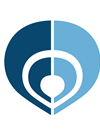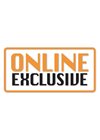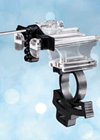Features
Robotic assisted perineal prostatectomy: descriptive technique of the inaugural case in the UK
Robotic surgery has taken full flight in the USA since its start in 2000 [1] and is replacing procedures where open surgical techniques were solely employed. While this technology is met with criticism over the costs, the superiority of robotic...
Penile Mondor’s disease
Mondor’s disease is a rare, self-limiting entity characterised by subcutaneous chord like bands throughout the body. These bands arise due to phlebitis of the subcutaneous vessels. Penile Mondor’s disease (PMD) is an isolated superficial thrombophlebitis of the superficial dorsal vein...
Focal therapies in prostate cancer
The standard of care in the management of prostate cancer has, to date, always been to treat the whole gland. This has ranged from surveillance, surgical excision / prostatectomy or external beam radiotherapy / whole gland brachytherapy. With the evolution...
Urodynamics in review: stress urinary incontinence in women produced by the Urodynamics Committee of the ICS
Urodynamic studies (UDS) are the best tools to objectively assess the lower urinary tract dysfunction (LUTD) of various aetiologies [1]. According to the general understanding and consensus of the medical community UDS should be performed only when they will change...
Optimising weight loss advice in obese women with urinary incontinence: a review
Background The National Institute for Health & Care Excellence (NICE) guidance specifies that women with a body mass index (BMI) of over 30, combined with urinary incontinence or overactive bladder, should be advised to lose weight [1]. A BMI over...
Hard flaccid syndrome
Chronic pelvic pain is defined as pain present below the level of the umbilicus with a duration of more than six months [1,2]. Chronic pelvic pain syndromes (CPPS) are highly prevalent in Western society, affecting both males and females. Studies...
‘No Deal’ Brexit – how might it impact urological practice in the UK?
On 29 March 2017, the Government of the United Kingdom of Great Britain & Northern Ireland triggered Article 50 of the Lisbon Treaty, formally starting the two-year period for talks with the European Union (EU) in which to reach a...
Recent developments in bladder cancer
There have been some exciting developments in bladder cancer over the last few years. Immunotherapy has prolonged survival in a proportion of patients with metastatic disease, with sustained efficacy in some. Advances in genetic analysis and molecular subtyping make personalised...
A negative ureteroscopy for stone disease: is it acceptable and is it avoidable?
Urinary tract stone disease and the consequent demand for endoscopic intervention in the upper urinary tract is an increasing phenomenon [1]. Although ureteroscopy is generally considered to be associated with low morbidity [2], risks do exist. Recognised complications include urothelial...
History of prostate biopsy – part 2
For Part 1 of this topic is available here. The major limitations of the transrectal ultrasound (TRUS) guided prostate biopsy (PBx) protocols are the risk of profound sepsis and the risk of persistently significant false negative rates, related to the...
The burning issue of urinary tract infections
Urinary tract infections (UTIs) occur when bacteria colonise and proliferate in the urinary tract. These are characterised by specific clinical symptoms (dysuria, suprapubic tenderness, urgency and urinary frequency) which commonly occur alongside the finding of bacteriuria. UTIs are common –...
Bladder carcinoma MRI
Bladder malignancy is one of the commonest malignancies of the renal tract, accounting for approximately 6% of male malignancy and 2% of female malignancy. The incidence increases with patient age with 70% of patients being over the age of 65...












